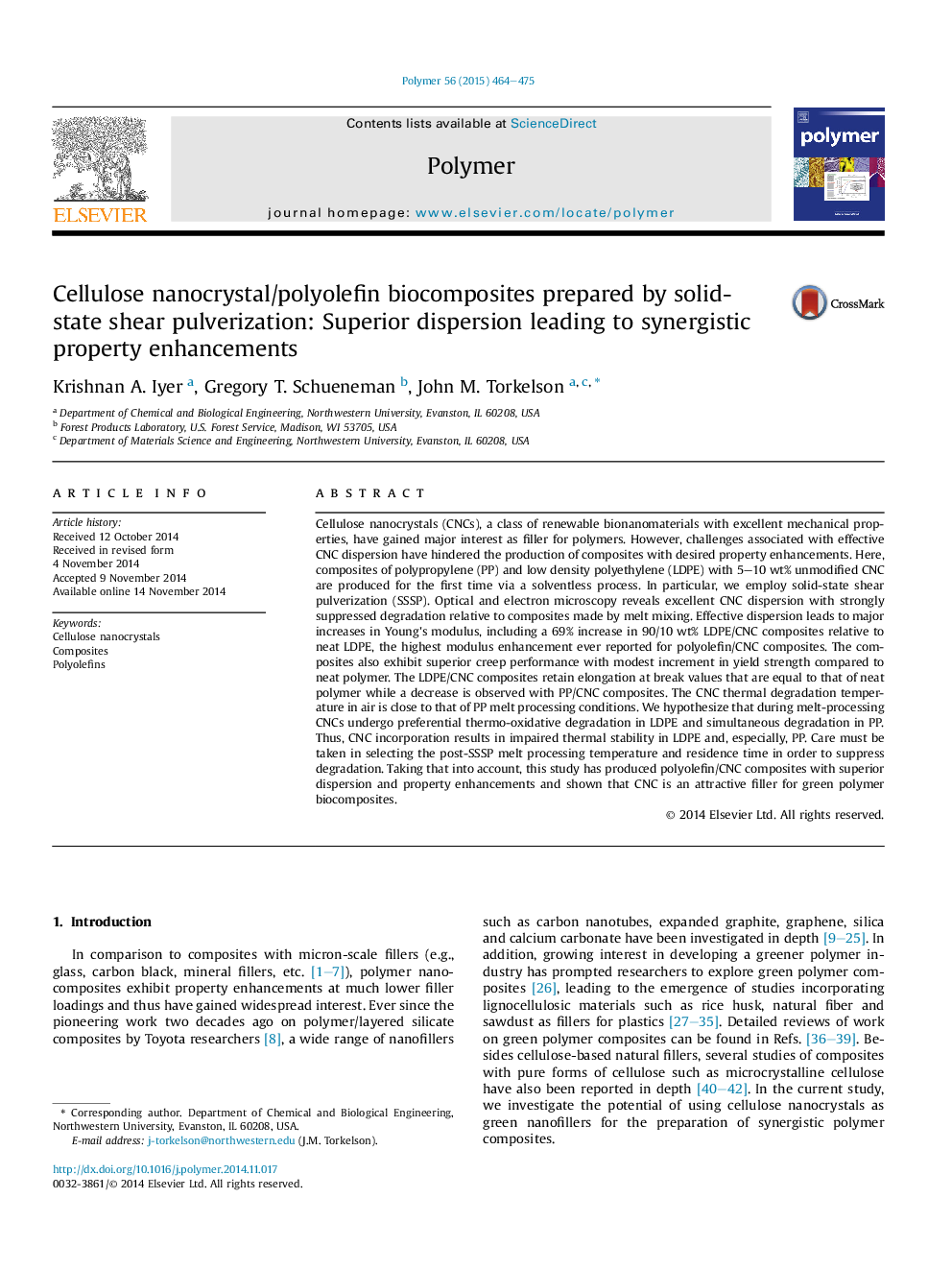| کد مقاله | کد نشریه | سال انتشار | مقاله انگلیسی | نسخه تمام متن |
|---|---|---|---|---|
| 5180629 | 1502550 | 2015 | 12 صفحه PDF | دانلود رایگان |
• Solid-state shear pulverization was used to prepare polyolefin/pristine CNC composites.
• First truly solventless process for producing polyolefin/pristine CNC composites.
• Highest reported enhancement in modulus of 69% for polyolefin/pristine CNC composites.
• SSSP processing results in suppressed degradation of CNC within polyolefin matrix.
Cellulose nanocrystals (CNCs), a class of renewable bionanomaterials with excellent mechanical properties, have gained major interest as filler for polymers. However, challenges associated with effective CNC dispersion have hindered the production of composites with desired property enhancements. Here, composites of polypropylene (PP) and low density polyethylene (LDPE) with 5–10 wt% unmodified CNC are produced for the first time via a solventless process. In particular, we employ solid-state shear pulverization (SSSP). Optical and electron microscopy reveals excellent CNC dispersion with strongly suppressed degradation relative to composites made by melt mixing. Effective dispersion leads to major increases in Young's modulus, including a 69% increase in 90/10 wt% LDPE/CNC composites relative to neat LDPE, the highest modulus enhancement ever reported for polyolefin/CNC composites. The composites also exhibit superior creep performance with modest increment in yield strength compared to neat polymer. The LDPE/CNC composites retain elongation at break values that are equal to that of neat polymer while a decrease is observed with PP/CNC composites. The CNC thermal degradation temperature in air is close to that of PP melt processing conditions. We hypothesize that during melt-processing CNCs undergo preferential thermo-oxidative degradation in LDPE and simultaneous degradation in PP. Thus, CNC incorporation results in impaired thermal stability in LDPE and, especially, PP. Care must be taken in selecting the post-SSSP melt processing temperature and residence time in order to suppress degradation. Taking that into account, this study has produced polyolefin/CNC composites with superior dispersion and property enhancements and shown that CNC is an attractive filler for green polymer biocomposites.
Figure optionsDownload as PowerPoint slide
Journal: Polymer - Volume 56, 15 January 2015, Pages 464–475
